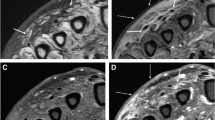Summary.
Mycobacterial and routine aerobic and anaerobic cultures were made prospectively from 22 patients with bone and/or joint tuberculosis. Mycobacteria were found on direct smear in 6 patients (27.3%), on culture in 14 (63.6%) and on histological section in 5 (22.7%). In one patient routine culture at operation revealed growth of Nocardia asteroides and Moraxella catarrhalis in addition to a positive culture of mycobacteria. Routine sinus culture showed growth of Staphylococcus epidermis in 3 out of 8 patients with draining sinuses. Thus, isolation of avirulent pyogenic bacteria from an operative or sinus specimen does not exclude the possibility of tuberculosis. Mycobacteria can often be identified from sinus-track culture in patients in whom operative culture, histopathological and clinical examination have failed to confirm the diagnosis of tuberculosis. Tuberculosis should be suspected if there are pus cells without pyogenic bacteria on direct smear, if there is no growth of any pyogenic bacteria or if there is growth of Staphylococcus epidermidis alone on routine aerobic and anaerobic sinus cultures.
Résumé.
Des cultures de routine et à visées mycobactériennes ont été faites prospectivement sur 22 patients présentant une tuberculose osseuse ou articulaire. Une mycobactérie a été trouvée à l’examen direct chez 6 patients (27,3%) par culture chez 14 patients (63,6%) et par examen histologique chez 5 patients (22,7%). 8 patients présentaient une fistule productive et chez 3 d’entre-eux, les cultures de routine ont montré la présence de staphylocoques épidermidis confirmant que l’isolation d’une bactérie pyogène à partir d’un prélèvement opératoire ou d’une fistule n’exclue pas la possibilité de tuberculose. Les mycobactéries peuvent souvent être isolées à partir du produit de fis- tule chez des patients pour lesquels les cultures de prélèvements opératoires, l’étude histologique et clinique n’ont pas pu conserver le diagnostic de tuberculose. La tuberculose aurait été suspectée si à l’examen direct il y a du pus sans présence de bactérie pyogène ou si les cultures ne montrent pas de développement de bactérie pyogène ou encore si on isole seulement du staphylocoque épidermidis par cultures de routine aérobie et anaérobie à partir du produit de fistules.
Similar content being viewed by others
Author information
Authors and Affiliations
Additional information
Accepted: 21 November 1997
Rights and permissions
About this article
Cite this article
Mousa, HL. Tuberculosis of bones and joints: diagnostic approaches. International Orthopaedics SICOT 22, 245–246 (1998). https://doi.org/10.1007/s002640050251
Issue Date:
DOI: https://doi.org/10.1007/s002640050251




